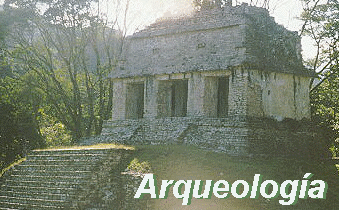Perhaps five thousand years ago the ancient
Mesoamericans were already living in
small villages near their corn and bean
fields - milpas - and hunting grounds.
Some of those innumerable villages grew
into larger towns, and some of these became
great "classical" (zero-900 A.D.) cities with
hundreds of thousands of residents, like
Teotihuacan, Cholula, Palenque, (among
many more). But beyond and between the
larger centers where tourists wander with
cameras and mysterious explanations, a
vast web and network of small settlements
has always existed and thrived, filling up
the earth of Mesoamerica with daily life
wherever there was water and good soil.
Through five thousand years, cultures of the
town-dwellers rose and fell and rose again.
The zone of settled cities moved north into
the western plateau and made contact with
the "pueblo" people of New Mexico, then
retreated in the face of drought and nomadic
invaders. In the southern jungles, hundreds
of Maya kings raised sacred pyramids and
palaces in cities which many of their people
then abandoned around 900 A.D., while other
Maya cities - especially in Yucatan - still
flourished - perhaps because of a different
type of government - more committee, less
kingly. Yet, while some cities fall, others
are born. Incoming nomads, like Toltecs and
Aztecs from the north, shall settle down and
found their own new towns and dynasties.
Across Mesoamerican Mexico, the dominant
form of human social life remained the town,
which focussed work and prayer and market.
Then, five hundred years ago, the Spanish
conquest grafted a new language and culture
onto these ancient roots. The church tower
replaced the temple pyramid mound, while
baroque and neoclassical architectures set
their feet down hard on this earth, and the
town plazas became ornamented after a
European style. But tortillas and tamales
and corn-ears ("elotes") are still eaten on
the benches at the center of every town, and
tequila and pulque compete against beer in
a supposedly European place - the cantina.
The people mostly speak one tongue now -
Spanish - although the ancient indigenous
languages are still struggling - but one thing
will never change - people come as families
to the town plaza, to eat and talk and pray.
Of course, more powerful than anything,
with the very power that rules our daily
life of food and elegant survival, there is
and forever will be... the market tianguis.







